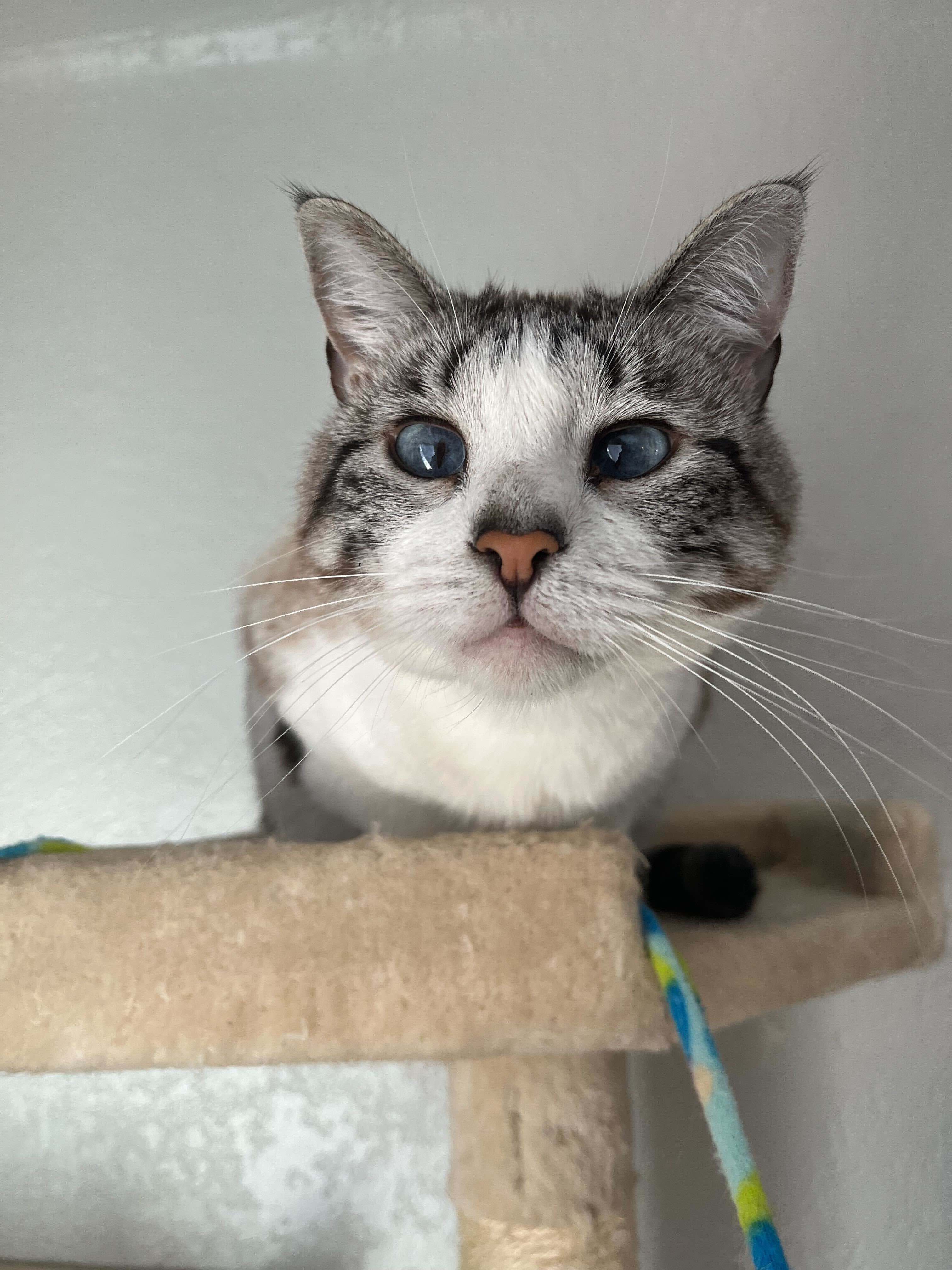Why Are My Cat’s Eyes Crossed?
Svetlana Popova/iStock / Getty Images Plus via Getty Images
Crossed eyes, where the pupil of both eyes is permanently pointed toward the nose, is actually a common condition seen in cats. Also called medial strabismus in cats, this appearance of crossed eyes in cats is caused by an abnormality in the muscles and nerves that control eye movement.
Many cats with crossed eyes can live normal lives, but there are some instances where this appearance can be a concern to pet parents.
Why Are Some Cats Cross-Eyed?
The majority of cats with crossed eyes are born that way, and it’s usually an inherited trait seen in Siamese, Himalayan, Ragdoll, and Persian cats.
The pupils seem to point toward the nose because the muscles controlling the eye movement are shortened toward the middle of the face. This is known as medial strabismus. Shortening of the eye muscles to the outside of the face (lateral strabismus) is rarer, but can occur.
Cats that are born with crossed eyes are rarely impaired by the condition and usually do not require treatment. But if a cat born with normal eyes becomes cross-eyed, this usually indicates a disease process that should be evaluated and treated by your veterinarian.
Causes of Cross-Eyes in Cats

Most cats that are born cross-eyed (congenital strabismus), have a pointed coat pattern, meaning the cat has a pale body color with darker fur on their face, feet, tail, and ears. A link is suspected between the gene for this color pattern and development of the eye muscles and nerves.
Cats that develop strabismus suddenly (acquired strabismus) usually have a disease directly affecting the eye socket and muscles, the nerves to the eye, or even the brain. Common conditions that can result in eye position changes include:
-
Trauma
-
Abscesses
Strabismus in cats is rarely the only sign of concern in these acquired cases. You may also notice:
-
Difficulty walking
-
Swelling of the face or eye
These symptoms should be evaluated immediately by your veterinarian and may even warrant an emergency visit to make your cat comfortable as quickly as possible.
A complete blood panel and X-rays will often be recommended. CT or MRI scans are often used to help diagnose diseases in cats involving the eye, ear, and brain.
Can Cross-Eyed Cats Be Treated?
Congenital strabismus is not normally treated, as it does not affect quality of life. But acquired strabismus can—and should—be treated depending on the underlying cause.
Viral, bacterial, and immune system causes of strabismus may be treated with oral medications such as antibiotics or steroids. Tumors, abscesses, and some inner ear infections may require surgery. In severe cases, this may lead to enucleation, or loss of the eye. Most cats tolerate this surgery very well.
Do Cross-Eyed Cats Have Poor Vision?
Cats born cross-eyed are rarely blind. But because depth perception depends on the eyes working together to send a signal to the brain, these cats may have more trouble judging distances. However, cross-eyed cats usually learn to adapt well to this and live normal, healthy lives.
For cats with acquired strabismus, vision is usually more severely affected. The cause of the strabismus determines how badly vision is compromised and whether normal vision can be regained. Your veterinarian can assess vision during a physical exam and discuss a long-term prognosis with you.
Caring for a Cross-Eyed Cat
Cats that do not make a full recovery from acquired strabismus may need a more managed environment to support them.
For instance, altered depth perception and balance issues make high furniture and cat trees less safe for these kitties. Pet parents must also make sure their litter boxes are easy to get into, opting for low-sided, uncovered boxes. Food and water bowls should be readily accessible on the level of your house where your kitty spends most of their time.
Severely affected cats may benefit from physical therapy, strengthening the remaining nerve pathways and muscles and teaching them to better coordinate their movements.
Cross-eyed cats with congenital strabismus often live normal, long, and healthy lives without much interference. That said, they are better suited to being indoor-only cats because their decreased depth perception makes outdoor threats like cars and predators harder for them to avoid.
Preventing Crossed Eyes In Cats
While genetic causes of medial strabismus are not preventable without careful breeding management, some acquired causes can be avoided with prompt care:
-
Work with your vet to prevent severe dental disease, which can lead to abscesses behind the eye.
-
Have itchy ears evaluated quickly for infection to prevent middle ear disease.
-
Routine blood work and yearly wellness exams can help find problems before they become severe.

